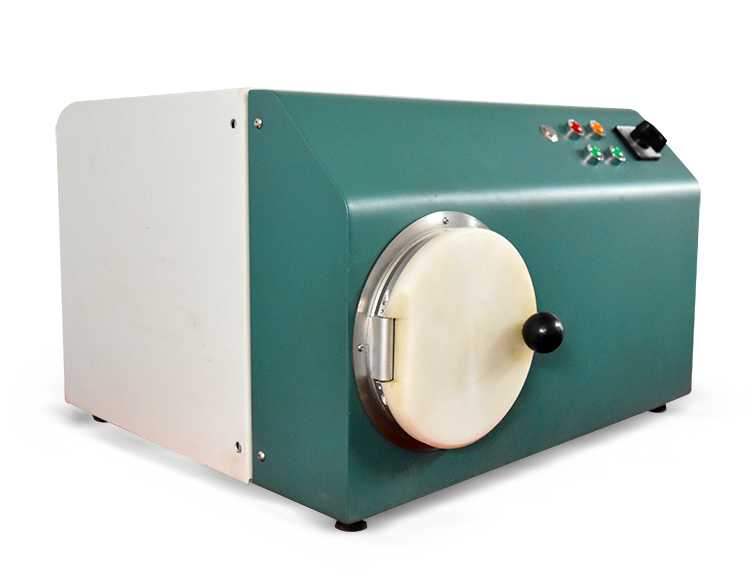The textile air permeability tester is a special instrument in
textile testing equipment(instruments). The internationally popular air permeability tester has three methods for the flow test unit: orifice type, circular nozzle type, and flowmeter method. Among them, the domestic common methods are the first two. There are related regulations in GB/T2624 and ISO5167. The last method of using a flow meter has a small test range and not many users. The air permeability meter uses a high-precision pressure sensor to test the pressure difference between the two sides of the sample. The flow rate is calculated by the single-chip microcomputer, and the air permeability and the air permeability can be displayed.
In the actual use of many products, the air permeability test is a rigid index. Related standards such as: GB/T 5453-1997, ISO 9237-1995, GOST ISO 9237-2013, GB/T 10655-2003, QB/T 2799-2006, Standards such as ISO 4638-1984 and ASTM D737-2004 (2016) have basically the same requirements for air permeability. When testing samples according to the standard, the test results of different instruments are not the same. What is the reason? Some people say it is caused by the nozzle or the orifice plate, and quoted a lot of data to try to prove their point of view is correct. Regardless of the discreteness of the sample itself, there are many reasons for the different test results. However, the real reason is not the nozzle type or orifice type. No matter which test method is used, the direct key factor is the traceability of the original data.
Many people often use textile testing equipment, but the general user is often in the cloud and mist about what is going on with the original data of the breather. When encountering data deviations, the reason is often found in the mechanical design of the instrument, which is precisely the performance of the layman. For a complete air permeability meter, there are at least thousands of original test data behind each test orifice or nozzle, combined with different test orifices and a large number of test data, the final original data is often tens of thousands. Combining these accurate data, it is best to revise the test nozzle or orifice plate, which means that the more accurate the original data, the smaller the deviation of the test results. Therefore, regardless of whether imported or domestically produced instruments are used, whether it is a nozzle or orifice design, the original data is sufficient and accurate, and good experimental data will be obtained in accordance with the test conditions specified by the standard. In order to verify the difference between the experimental results of the orifice type and the nozzle type, the JHI-Tech R&D Center has specially developed two different types of gas permeation meters for scientific comparison experiments. Through the revision of the original data of the nozzle type and the orifice plate type, test results with good linearity have been obtained. The difference is the orifice plate design, the use of plug-in card replacement, the test efficiency is greatly improved compared with the nozzle type, the same working time, the orifice plate work efficiency is at least three times that of the nozzle type, it can be seen that the air permeability meter uses the nozzle and the orifice plate, Regardless of the test efficiency and work intensity, both methods are feasible. Which method is used depends on the user's habits.

N900 Textile Air Permeability Tester
In addition, the laboratory's conventional instruments and equipment have played an important role in the process of scientific research and testing, and promoted the innovation and development of science and technology. If there is no overhaul and maintenance of equipment and equipment, any scientific research and test work cannot be carried out smoothly. Therefore, general textile laboratories need to be equipped with professional maintenance staff for conventional instruments and equipment, and enhance their service awareness.
Fault 1: When the power switch is turned on, there is no display on the device, and the screen and the power display light are not on.
Possible cause: power supply problem, check the power supply provided.
Possible cause: The fuse is broken.
To check or replace the fuse, pull out the power plug of the instrument, unscrew the fuse knob cover, and then take out the fuse. If you need to replace the fuse, please use a fuse with the same rated current.
Fault 2: If the error range is out of tolerance in the calibration confirmation and leak inspection.
(1) Connect the power and air source to enter the test interface.
(2) According to the "Factory Calibration Data Sheet", install the calibration plate and the corresponding number of nozzles.
(3) Click [Set] to set the test pressure difference, sample area, nozzle number, and test unit, etc.; return to the test interface, click [Run], the experiment will automatically stop, and determine whether to perform the [Calibration] system according to the air permeability. If they are inconsistent, click the lower left corner to enter the password 8888 to enter the test result correction system, fill in the corresponding test results according to the "Factory Calibration Data Sheet", save and exit.
(4) Leakage inspection: When it is a non-perforated plate, adjust the fan speed through [Acceleration] [Deceleration] to make the pressure difference reach 100Pa, and the air permeability test result is less than 5mm/s as normal, and the instrument has good sealing.
Fault 3: The instrument has no response when the button is pressed.
Possible cause: The button is broken.
Normal minor faults of general textile testing equipment(instruments) can basically be solved by our laboratory personnel. If you encounter problems such as procedures, you must contact the manufacturer's professional engineers to solve them, and you must not disassemble them privately to avoid greater losses.